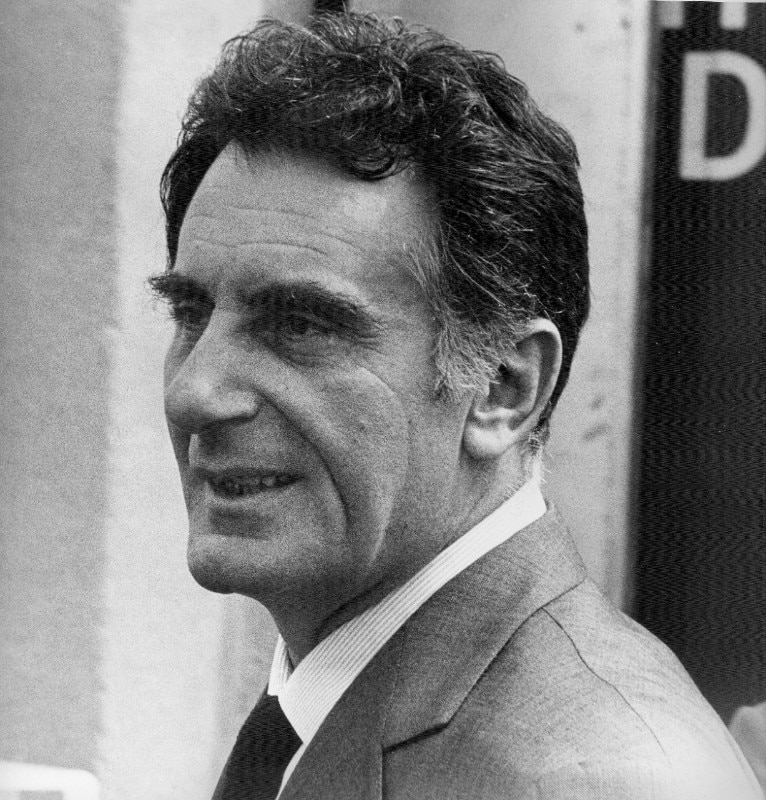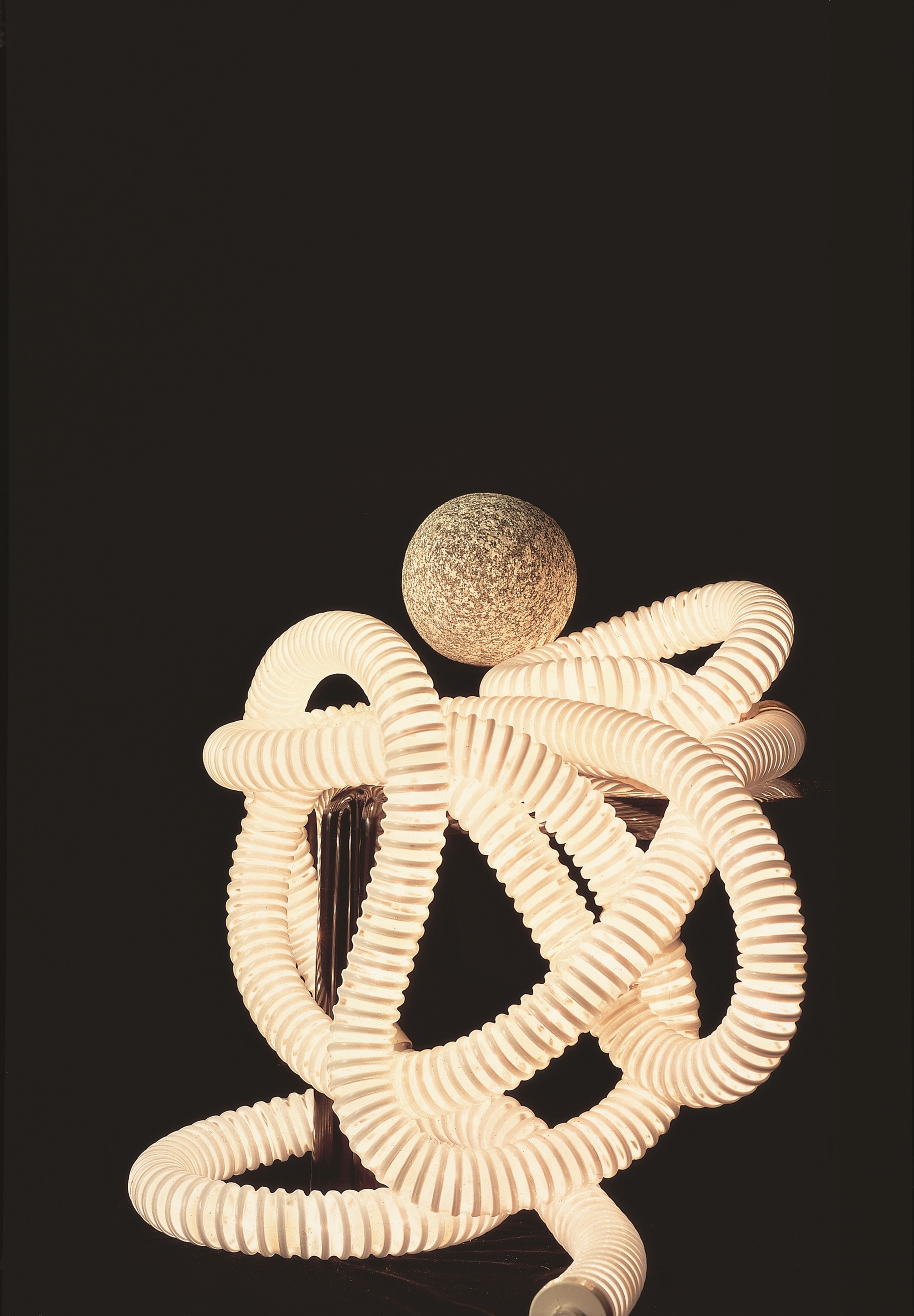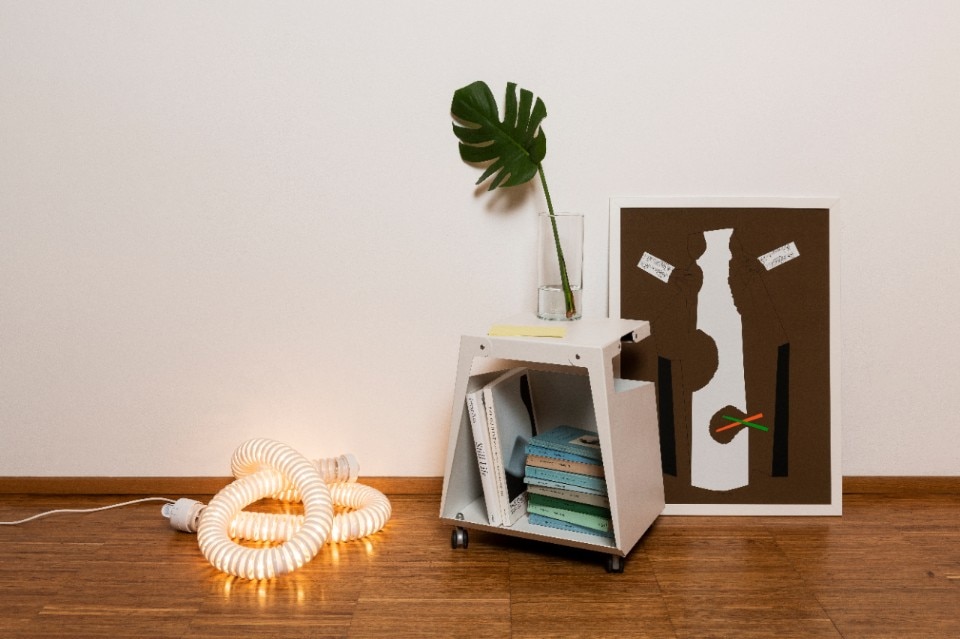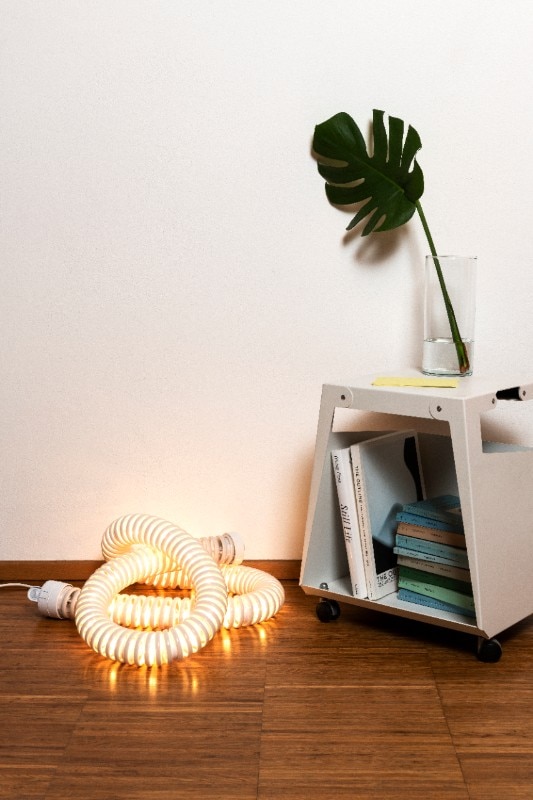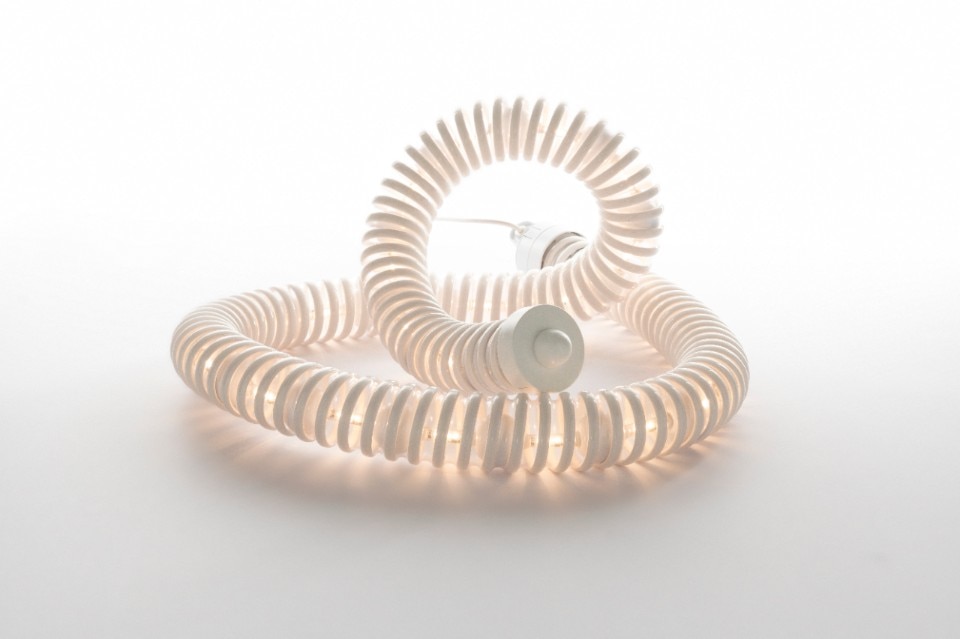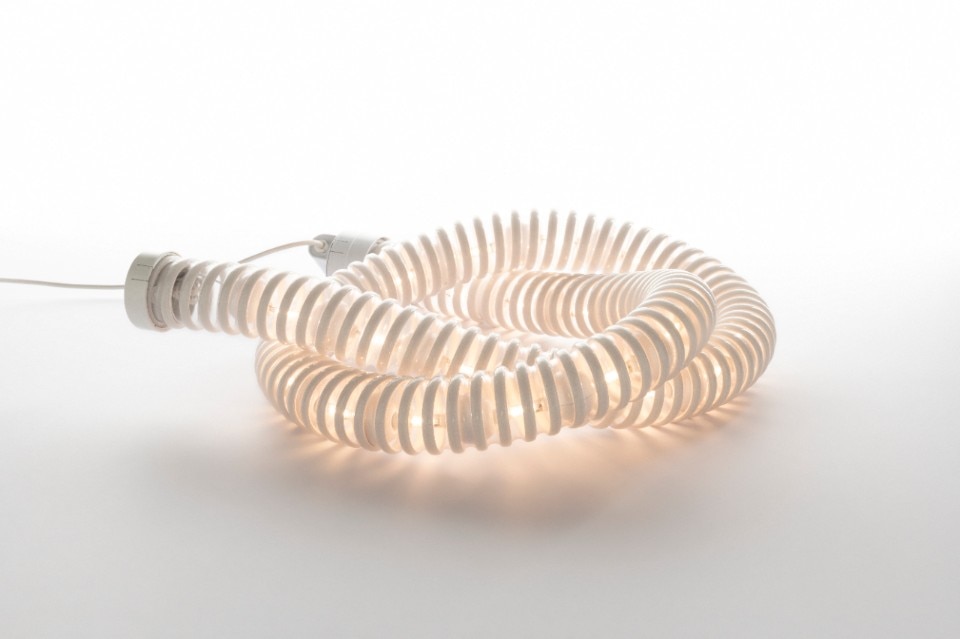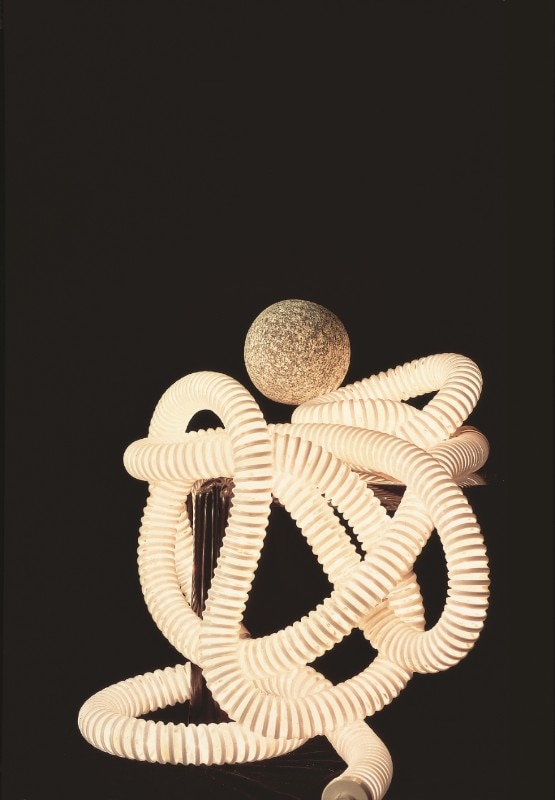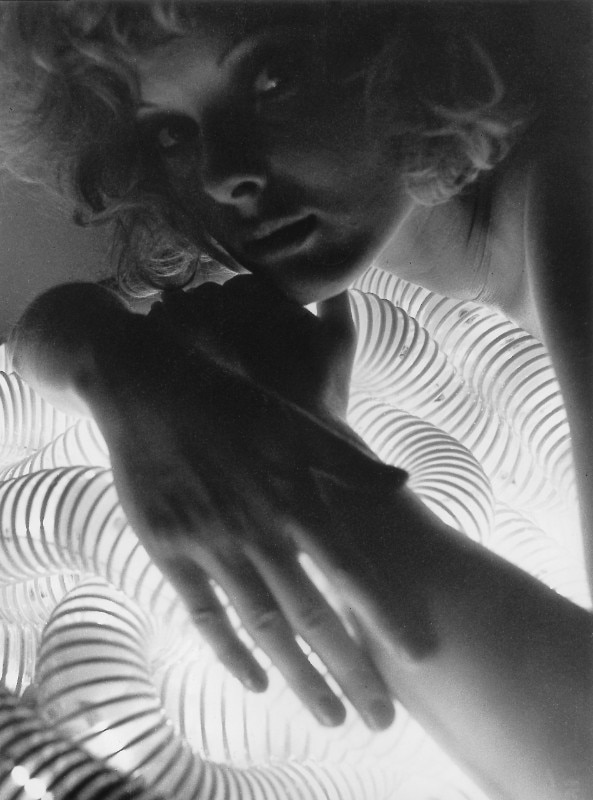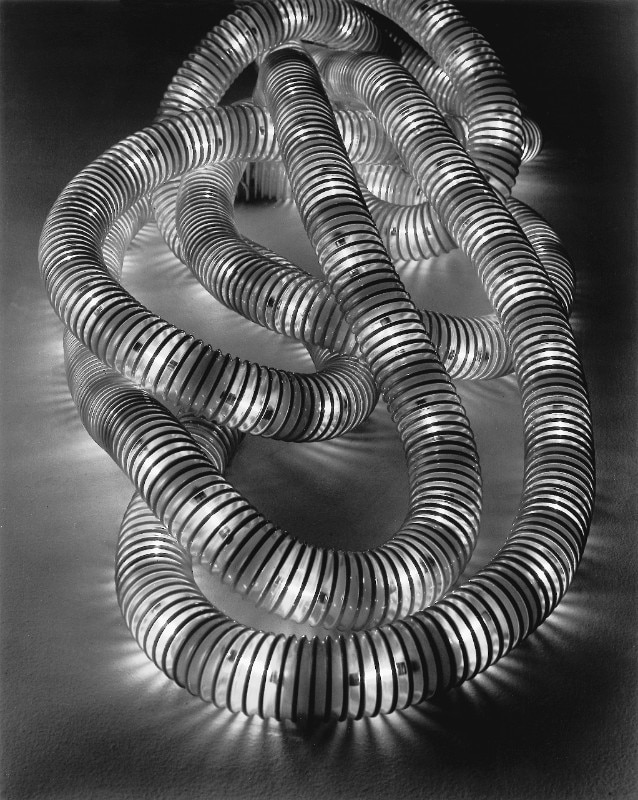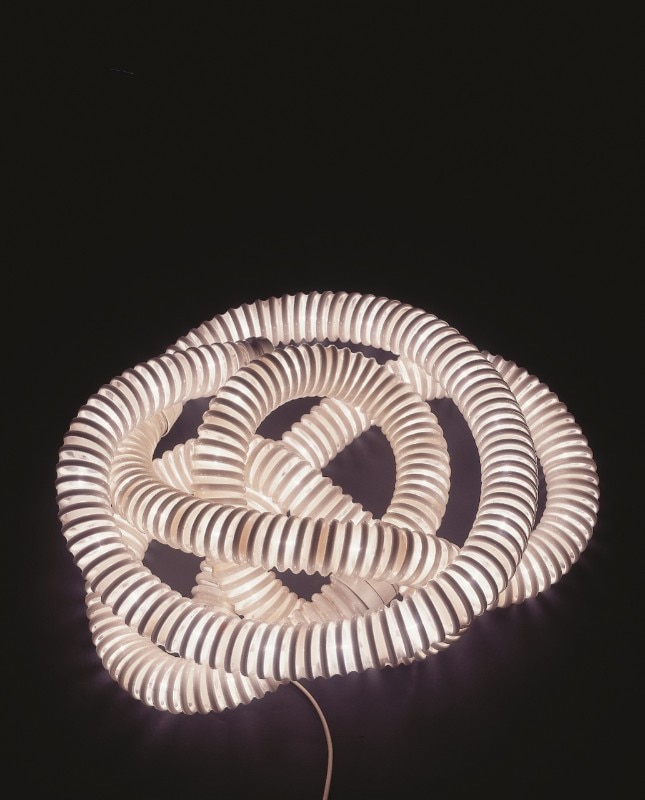Someone referred to him as a “silent maestro of Italian design”, a fitting and evocative description. Gianfranco Frattini did not like to flaunt, theorize, exhibit.
Sober, discreet, and concrete, Frattini was the embodiment of the Ambrosian bourgeoisie that shaped him. He entrusted his projects and objects with the responsibility of speaking on his behalf and giving a voice to his visions.
Trained under Gio Ponti and steeped in the rationalist tradition, Gianfranco Frattini, free from provincial constraints and attentive to the tenets of the modern movement, spent half a century applying the principle of Ernesto Nathan Rogers in an original and often surprising manner: from the spoon to the city. This adeptness allowed him to transition seamlessly from architecture to furniture design, exploring a diverse range, including furniture, lamps, vases, and jewelry. Always in pursuit of solutions that could interpret and fulfill the needs for innovation and modernity, Frattini played a pivotal role in addressing the societal shifts that characterized Italian life in the latter half of the twentieth century.

Meticulous in his attention to details and particulars, possessing a profound understanding of materials, and characterized by an exceptional sensitivity in his interactions with workers and craftsmen – he spoke their language, as he often noted (“my life as a designer is in the factory”) – Frattini upheld a design philosophy that was at once elegant and essential. His approach avoided any excess or redundancy, harmoniously integrating every detail into the cohesive whole.
Filtered through his sensibility, the memory of the past never led Gianfranco Frattini towards the vernacular or a taste for revival. Instead, it blossomed into a new language that is profoundly contemporary, personal, timeless, and immune to fleeting fashions. Guided by the belief that design is “first and foremost an effort to improve reality”, and to achieve this, one must “seek to know and understand it”, Frattini approaches every design by questioning its intended user, purpose, functionality, and the most suitable materials. However, this thoughtful approach doesn’t result in rigid functionalist dogmatism. On the contrary, Frattini is equally captivated by design endeavors that exhibit freedom and richness in flair and intelligence.
Consider how Gianfranco Frattini addresses and resolves the lighting challenge in one of his most iconic creations, the Boalum lamp (1970): defying conventional norms, Frattini envisions an extended, flexible, luminous tube that can be positioned anywhere – whether hung, coiled like a ball of yarn, knotted like a thick cord, or placed directly on a surface. Collaborating with Livio Castiglioni, Frattini dismantles traditional lighting fixture conventions, giving rise to a perfectly functional object, albeit one not devoid of its own unmistakable and delightful whimsy, as aptly noted by Pier Carlo Santini.
Frattini upheld a design philosophy that was at once elegant and essential. His approach avoided any excess or redundancy, harmoniously integrating every detail into the cohesive whole.
Demanding of himself to the point of pedantry and unwavering in his belief that the home is a fundamental sanctuary for human life and its unfolding, Frattini extends his exacting standards to the objects and environments he designs.
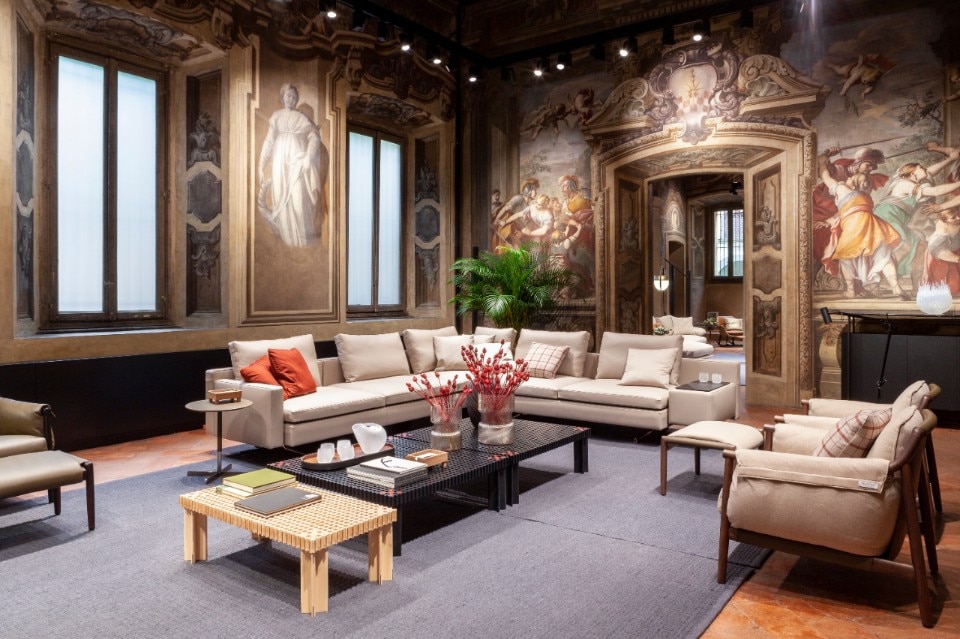
Illustrative of his “method” and vision is a revered piece that persists as a cult object, Kyoto. This small table crafted in 1974 and brought into production by Bottega Ghianda is a masterpiece of cabinet-making, displaying exceptional craftsmanship, structural ingenuity, and manufacturing wisdom. Its top is constructed with hundreds of successive joints in solid beech, resembling “combs”.
Swiftly embraced into MoMA’s permanent collection and consistently in production since its inception (currently manufactured by Poltrona Frau), Kyoto stands as a quintessential example of how, even amid the zenith of machine aesthetics, Frattini remains dedicated to a methodology that never sidelines human presence in project realization. Frattini’s humanist inclination is further evidenced in another notable creation: the yellow construction helmet, conceived for Montecatini in 1963. A pioneering application of plastic for preventative design, it underscores his enduring commitment to contemporary issues, particularly workplace safety and worker protection.
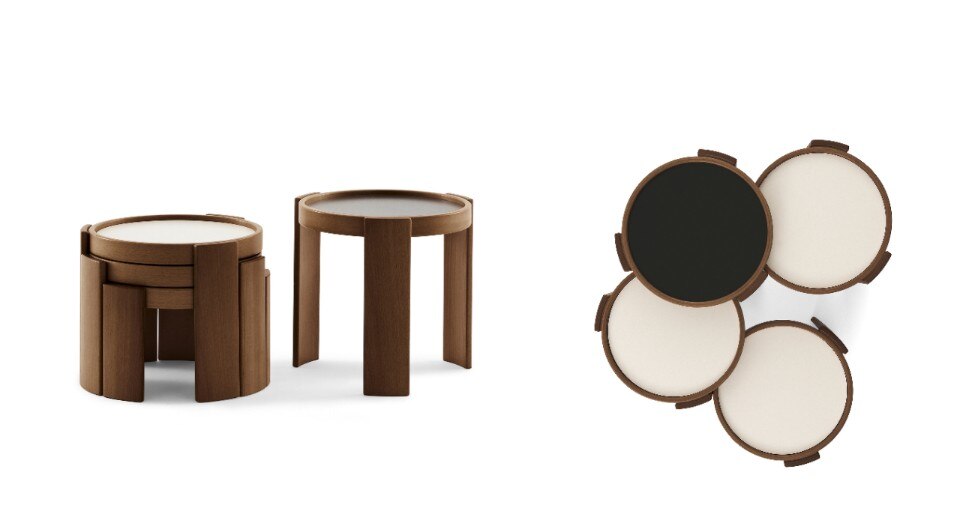
Yet, it is the entirety of his oeuvre (two decades after his passing on April 6, 2004) that renders him a figure worthy of reconsideration, rediscovery, and a more prominent role in the overarching landscape of Italian design. The Scrittoio 530-532 desk, brought into production by Bernini in 1957, transcends the historical memory of old family furniture that Frattini intimately knew from his upbringing, infusing it with an aesthetic-functional rigor that melds the characteristics of both a writing desk and a secretaire. The Albero rotating bookcase, crafted in 1959, elevates vertically in a floor-to-ceiling model, disrupting the conventional notion of book-holding furniture. The stackable small tables, produced for Cassina in 1966, not only respond to a new need for conviviality but also address the issue of clutter when not in use, thanks to their stackability. Meanwhile, the Sesann armchair and sofa (1970), gracefully resting on the floor, provide a tangible solution to the less formally rigid and composed living needs that emerged in the latter half of the 1960s.
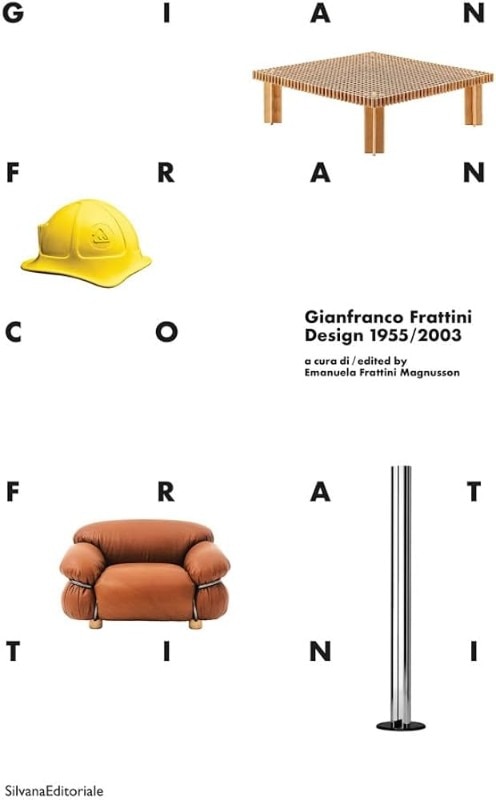
The recently published exquisite volume, “Gianfranco Frattini. Design 1955/2003”, by Silvana Editoriale and curated by his daughter Emanuela Frattini Magnusson, meticulously charts his prolific output. It reiterates the intrinsic connection present in Frattini’s work between the object and the space. As rightfully observed, in his vision, “there is no living room without its lamp and no kitchen without its cutlery”, forming a harmonious entirety where design genuinely embodies a tangible opportunity to enhance the habitability and betterment of the world.
Opening image: Gianfranco Frattini. Photo courtesy Poltrona Frau


